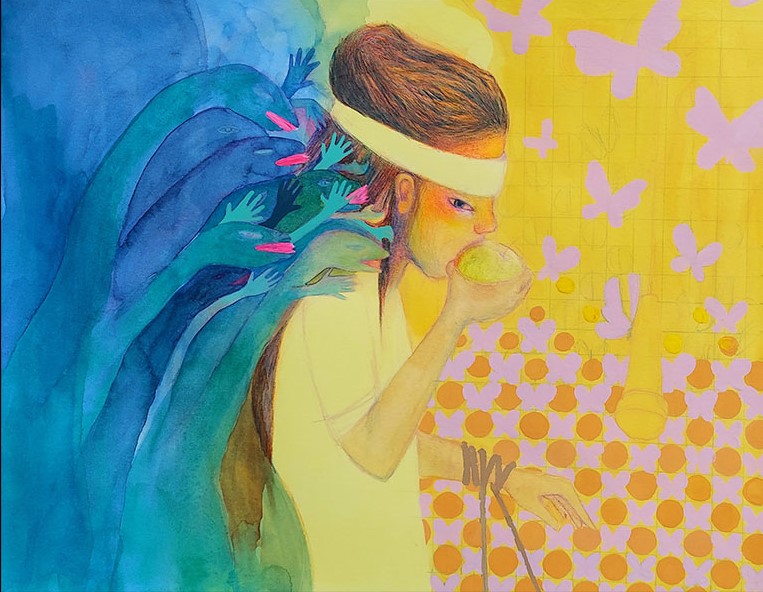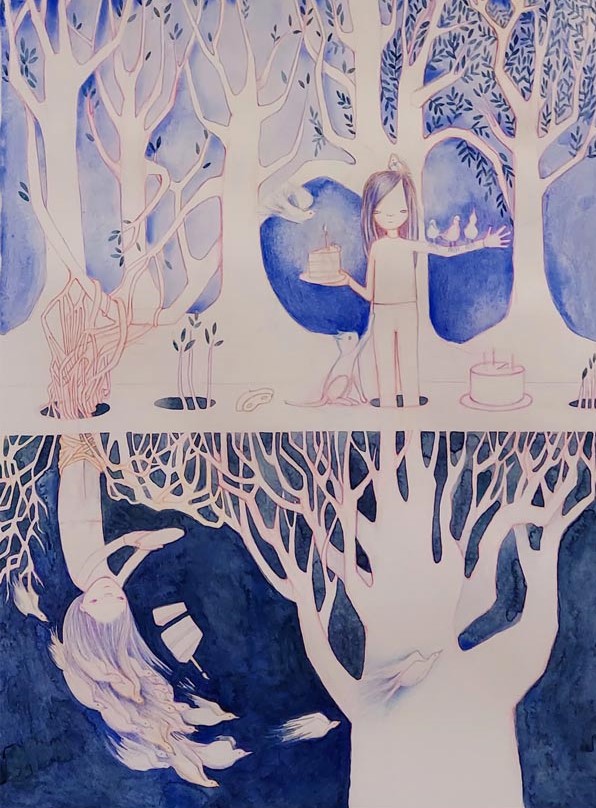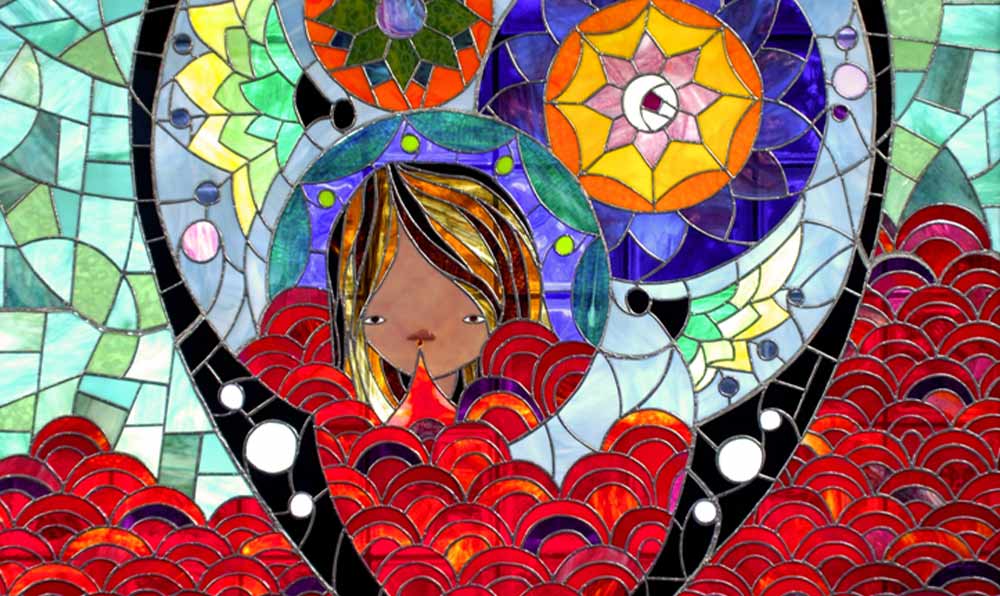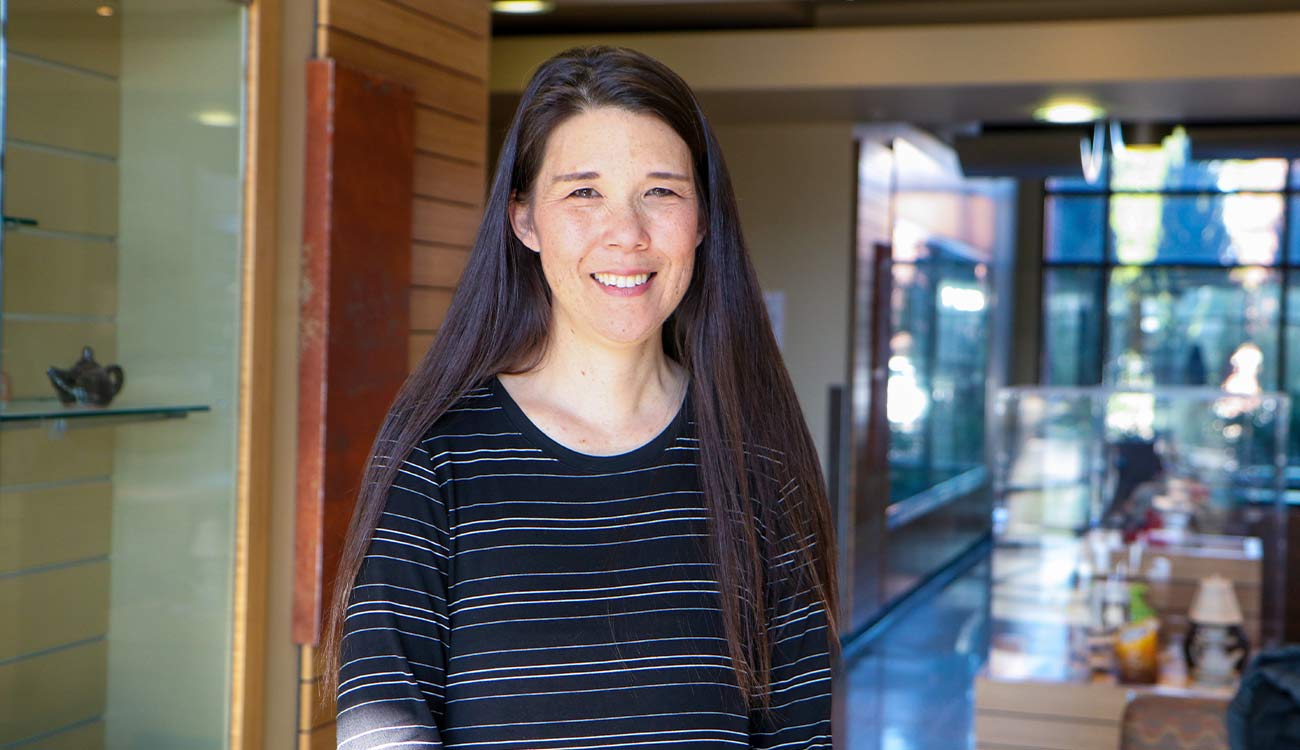As a young child, Kayo Nakamura was so quiet, some people thought she might not be able to speak.
In art, however, she found a place where she could freely express herself.
“I got a little lost in other ways of being in the world, but with art and drawing I had a super power,” said Nakamura, who joined Yakima Valley College’s art faculty this fall.
During her undergraduate studies, Nakamura focused on drawing and painting, then worked as an illustrator and graphic designer after completing her bachelor’s degree. When she started pursuing her Master of Fine Arts at Claremont Graduate University, she experimented with anything she could.
“I love teaching myself things and figuring out how do something in order to add a new process or media into my work,” Nakamura said. “I taught myself stained glass. I learned video editing. I did a lot of things with fabric and embroidery.”

At the same time, Nakamura says drawing underlies all of her artwork as a way of thinking through her creative process, and she’s made it a priority to cultivate a daily drawing practice for the past 20 years.
Humor also often emerges as a part of her work, though Nakamura notes it’s not something she intentionally strives to do.
“Not a ‘laughing at’ kind of humor, but sort of the relief and a knowing laugh that people have when they relate to something,” she said. “My work is a lot about connecting as well, and exploring how humor can connect people to art.”
“I want to break out of mentality that art is something that you have to go to a special place to visit, rather than being something that’s all around you and you’re living with every day.”
— Kayo Nakamura

"Dream in Blue #3" by Kayo Nakamura.
While Nakamura’s work has been featured in galleries in Seattle, New York, Los Angeles,
Boston, Japan and Germany, she believes opportunities for people to engage with art
need to be more open.
“I want to break out of mentality that art is something that you have to go to a special
place to visit, rather than being something that’s all around you and you’re living
with every day,” Nakamura said. “It’s important that people are able to see work in
their community.”
That’s why Nakamura is excited that the Larson Gallery is located on YVC’s Yakima
Campus.
“I like how community-minded the Larson Gallery is,” she said. “It’s amazing to me
having that opportunity for our community."
Nakamura, who comes to YVC after serving on the art faculty at Seattle Pacific University,
said the college being deeply embedded within the community appealed to her.
“I feel like YVC is a strong example of a place where people have access to improve
their lives,” she said. “This is a place where people can connect to their artistic
side and develop it. One of the reasons I love YVC is we’re proactive about access
to education and I want people to feel, ‘I can do this. I can make art and people
can see this.’”
Classes she’s teaching at YVC include Drawing I and II, Printmaking, Painting I and II, and 3D Design and she’s thankful to have the opportunity to teach such a wide range of art courses
“Most of my previous teaching was [two dimensional] art, but all of my work from 2003 to 2020 was 3D so that’s exciting to be able to expand my teaching here,” said Nakamura. “I love figuring out materials and nerding out over that. That’s where my engineering or scientist side comes out.”
Ultimately, she hopes that through her teaching, she can help people better appreciate how art can connect people and communities, and enable them to see the world in new ways.
“The amazing thing about art is everyone can have a different experience with it,” Nakamura said. “I hope to help people think of art like speaking, like a basic human function.”

She believes all students can benefit from taking art classes. Art deals with uncertainty, she noted, and, whatever academic discipline a student is studying, uncertainty is the birthplace of innovation.
“The world needs more creative leaders, teachers, etc.,” Nakamura said. “At a basic, welcoming level, learning art absolutely cultivates these skills in the learner. Over and over, the learner is navigating uncertainty. Being in an art studio environment is so conducive to finding impossible solutions, shaking off ordinary perceptions and finding beauty in unlikely patterns and sequences.”
To see more of Nakamura’s work, visit her website or on Instagram.
